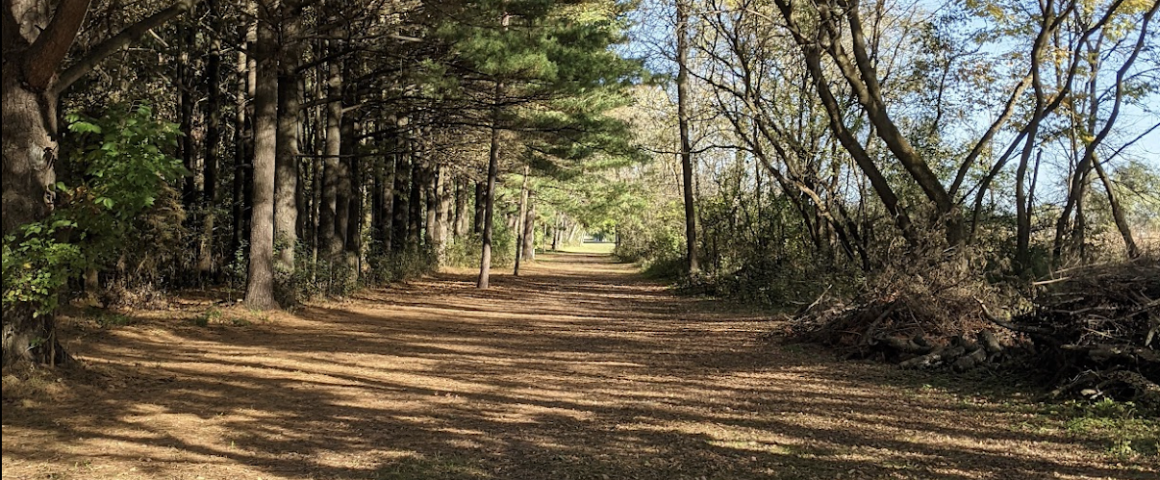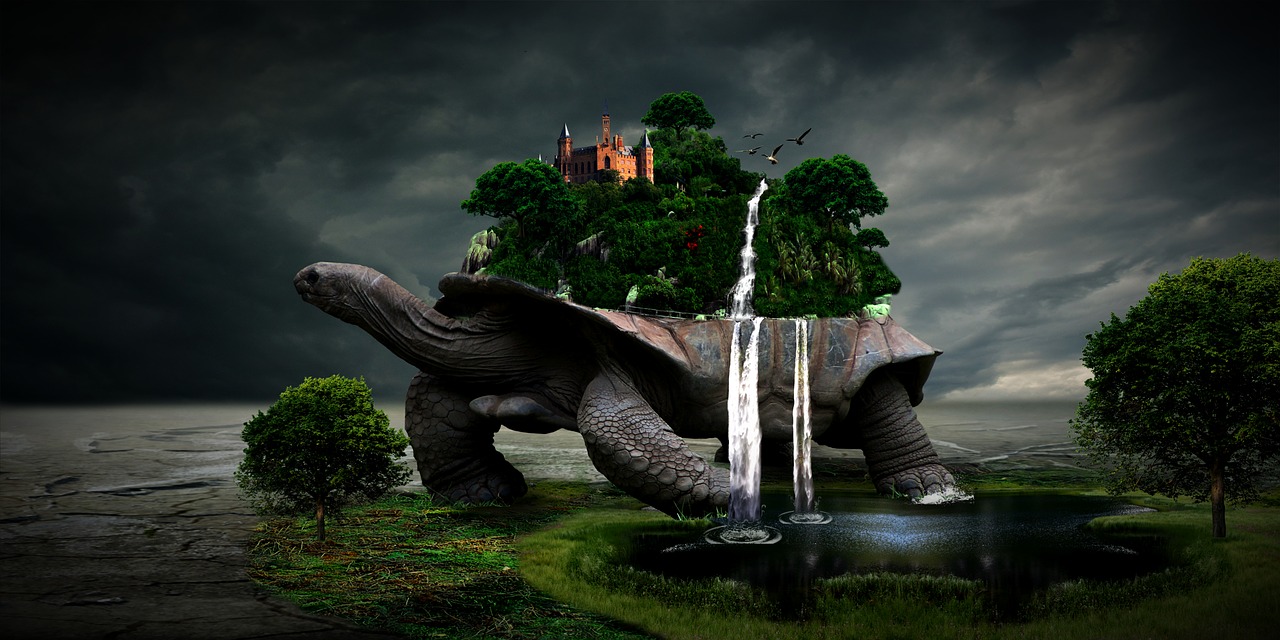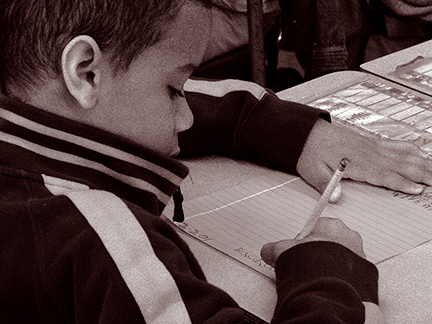When the juniors and seniors in my creative writing classes were young, they built tree forts. They explored nature in senses and soil, on bike and foot. They created make-believe universes with sticks and leaves. But now, they say, there’s no time for nature. There are math problems to practice, hours to work, miles to run. Over-scheduled and pressure-cooked, my upperclassmen search for connectedness, grounding, and peace. Free time? If there is any, they’d rather escape in YouTube videos or scroll TikTok dances. They know they won’t find remedies on social media, but they’re not sure how to stop their doom scrolls; instant gratification comes too easy there.
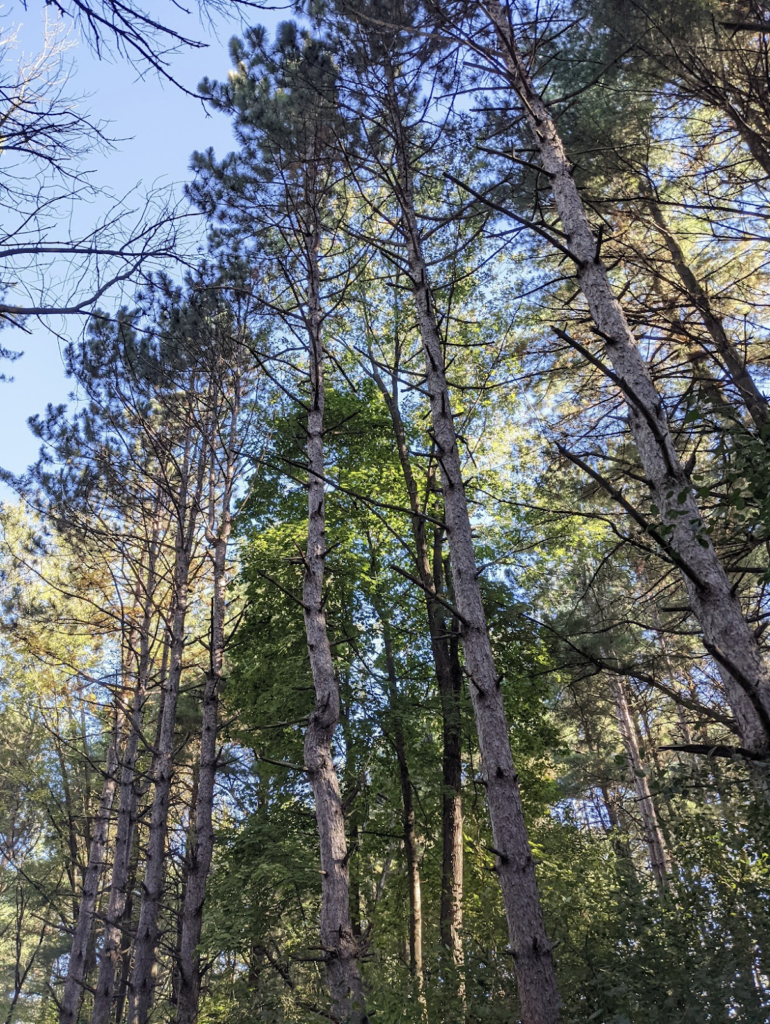
According to Rachel Carson, nature is the prescription for their ailments; nature’s wonders will connect and calm them. Guided by Carson’s philosophy, I decide to see what happens when I focus my writing class on the natural world. So, notebooks and pens in hand, my students and I venture through our suburban high school’s 117 acre campus.
Behind the football fields, we see sparrows nesting. We notice the scent of freshly cut grass wafting over from the softball diamond. As we venture onto the cross country trail, we come upon a prairie restoration area. We hear the caw of a blackbird perched among the cattails and the squawk of a lone seagull echoing from the soccer field.
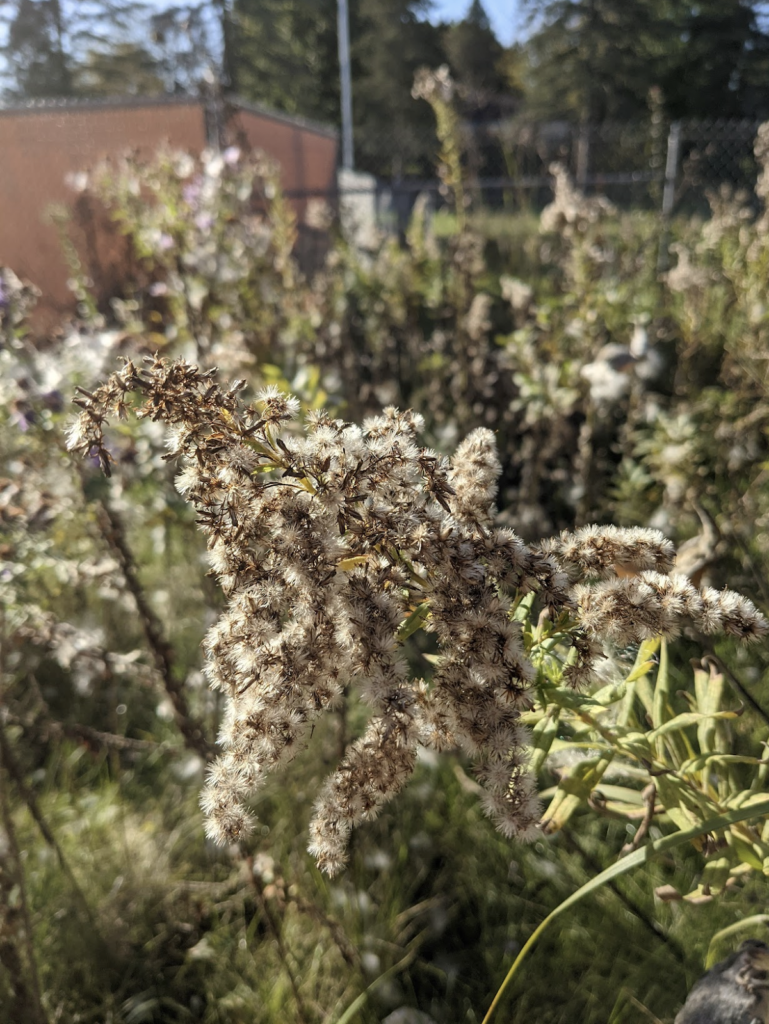
I bend down to look at the milkweed by my feet.
“I planted these in Landscape Ecology class freshman year,” a senior says. “They’ve grown so much.”
“Tell me more,” I say, rubbing the floss between my fingers.
“These plants are native to this area [Southeastern Wisconsin],” she says. “They grow almost anywhere, reseed themselves. And they’re good for monarchs.”
The seventeen- and eighteen-year-old giggles create a harmony with the goldfinches and mourning doves. I feel nature bringing the students closer, as they search the sky, the grass, and the trees for the next observation. It’s like a scavenger hunt and students proudly share their findings:
“You have to see this anthill. It’s huge.”
“That’s an echinacea plant. I have one at home.”
“You can’t eat those mushrooms, but they make cool spore prints.”
Although we are walking through the familiar school grounds, many students express surprise as they spot plants and wildlife they’ve never noticed before. “I never realized how much beauty surrounds us,” one of them says.
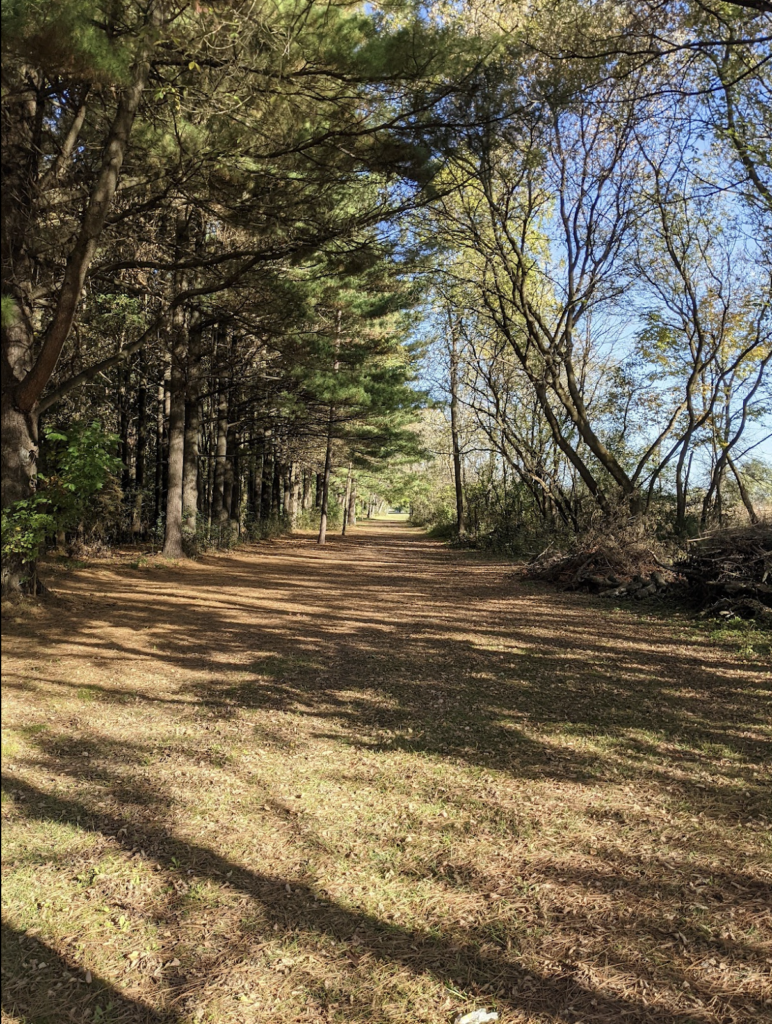
Our walk takes about an hour and before we re-enter the building, I ask students to pause. To breathe deeply. To take note of their body’s physiological changes. I ask, “How has your mood changed? Do you feel different after spending time outside?”
Once back in the classroom, students note, on paper, their observations. With fifteen minutes left in our class period, they each reflect on their experience aloud. One at a time, students share what they found. I transcribe, shaping their observations into a free-verse poem.
During the next class, I project their words on the board and the class silently reads our collaboration several times. After each read, students point out places for revision, rewording, and restructuring. One student suggests a pattern: three lines in each stanza. More students suggest moving lines or trying different enjambments. As a class, we find a way to naturally include everyone’s observations.
Over the next few classes, we revisit the poem. Students continue to suggest modifications until they’re collectively satisfied with our collaborative class poem, a process I will repeat with each of my six sections of creative writing.
Nature Walk The sun shines down upon us, like an old familiar face. Snap, we hear the crunch of the dried pine needles and see freshly fallen leaves beneath our feet. Every tiny leaf faces towards the sun to bask in her energy. The howling of the wind. Chirp, chirp, sing the birds. The trees slowly dance in the breeze. The droplets of dew slide off blades of grass. It smells like a cold rush of air and we see hundreds of cars frost in the crisp morning air. The trees are like skyscrapers in Times Square, like wise men, always there, never forgotten. The leaves change colors like an aging human. When the breeze rushes, it settles in whispers of the woods. A sea of cattails glistens in the sun, like quiet observers, watching the surroundings. This is the gateway to life. We hear the leaves under our feet crunching as flowers stand like models, waiting to be seen and admired. The sky swirls with white clouds in the heavens. Smelly pines, chirping birds, crunching leaves, and bare branches on trees invite us to climb them. Pine needles cover the ground like a blanket. Birds sing their morning songs as the sun grows into the sky and the houses are quiet, like an abandoned city.
In our next class, I introduce students to the work of Rachel Carson, a prolific writer who was the inspiration for the Environmental Protection Agency and the modern environmental protection movement. We read Carson’s essay, My Favorite Recreation, and I tell students that Carson wrote the piece when she was their age. Even though My Favorite Recreation was originally published in 1922, students note it could have been written yesterday.
“Imagine if 100 years from now, students read your piece in their creative writing class,” I tell them. I want my students to know their words can make a difference, that their voices matter.
Students tell me exploring, discussing, and writing about nature is a positive and calming force, so we decide to construct pieces for The Rachel Carson Landmark Alliance’s annual writing competition. For this competition, students are required to work in intergenerational teams and explore nature’s wonders; some choose to include parents or grandparents, aunts or uncles, siblings, significant others, and classmates to collaborate on poems, essays, narratives, or vignettes.
Once their team is set, the students decide on a topic and I assist them as they research the lifecycle of a bee, or investigate the process of pollination, or as they track the mysterious and powerful movements of a snow leopard as he journeys in and out of danger.
Doctors, according to a PBS NewsHour story, are increasingly prescribing nature to combat illnesses, including anxiety and depression. Today, my students can’t stop laughing and smiling. They seem younger—more innocent, more youthful, more excited to be at school—and I can’t help but feel that our writing activity has confirmed the findings.
Students write about snorkeling off the coast of Jamaica, the luster and miracle of odd sea creatures like the sea cucumber and puffer fish; about hummingbirds performing a petite, precise, and picturesque ballet; about a visit to a Thai elephant sanctuary; and about the battering winds, rocky surfaces, and shimmering sunlight of a camping trip in British Columbia.
Over the next two weeks, students draft, peer edit, and share their pieces with groups and partners. Many students include me on their intergenerational team. I appreciate being able to work with my students and their favorite people, and am happy that our explorations of the natural world have given us this pathway to collaborate.
Once students have finished editing and polishing their pieces, they submit them to the writing competition. I also submit each class’s collaborative poem. When I do, a few students ask if I can attach the photos they took on our class walk. “That’s a wonderful idea,” I say.
In the entries, students focused on the power of wonder as they explored, as the competition judge explains, their own backyards, on rooftops, and in the trees and meadows of family farms. Some informed their writing with research on creatures of particular interest—sandhill cranes, oysters, tardigrades. Others simply took the time to go outside and look, with senses tuned to the earwigs, spiders, butterflies, and brown birds with carmine heads and cobalt wings. In celebrating nature’s earthly and celestial impact, the exotic elements became approachable, and the more mundane became beautiful.
As we end the unit, the students reflect on our experience. One student says Rachel Carson taught her that she can spend her life pursuing topics she’s passionate about. Another student tells me she’s inspired to study what comes naturally for her, so that she can maintain a sense of wonder and happiness in her work.
In our outdoor-centered creative writing study, I hope all my students have rediscovered nature’s power to inspire their creativity, embolden them to speak, and connect them to their community.
When the contest results were announced, I was pleased when twenty eight teams from our school were recognized. I was also gratified to see how well the judge’s comment captured the experiences my students and I had shared in our explorations of nature: “In all, we heard from teams in 18 states, two foreign countries, and one territory. Our collaborators included mothers, fathers, grandparents, aunts, brothers, sisters, and cousins, as well as teachers and tutors…Several themes recur in this year’s entries—the addictive distraction of screens; the fragility of our planet; and the need for better stewardship—but one overall message emerges, as articulated by a young participant: ‘Through our shared experience we realized that there is beauty everywhere if you simply decide to look.’ We are grateful that Rachel Carson has once again inspired so many to do just that.”
Elizabeth Jorgensen is a writer and teacher. Her memoir, Go, Gwen, Go: A Family’s Journey to Olympic Gold is available now (Meyer & Meyer Sport, 2019). She hopes you’ll buy it from a local bookseller. Learn more on her website: lizjorgensen.weebly.com

